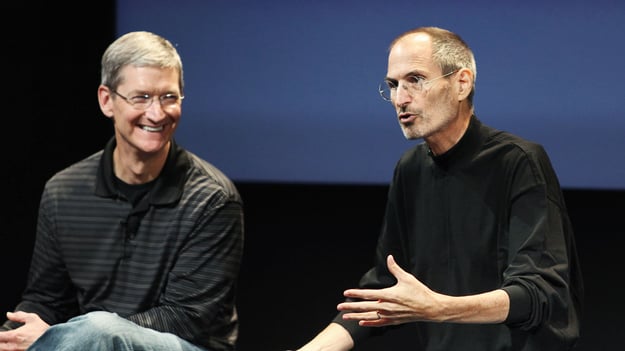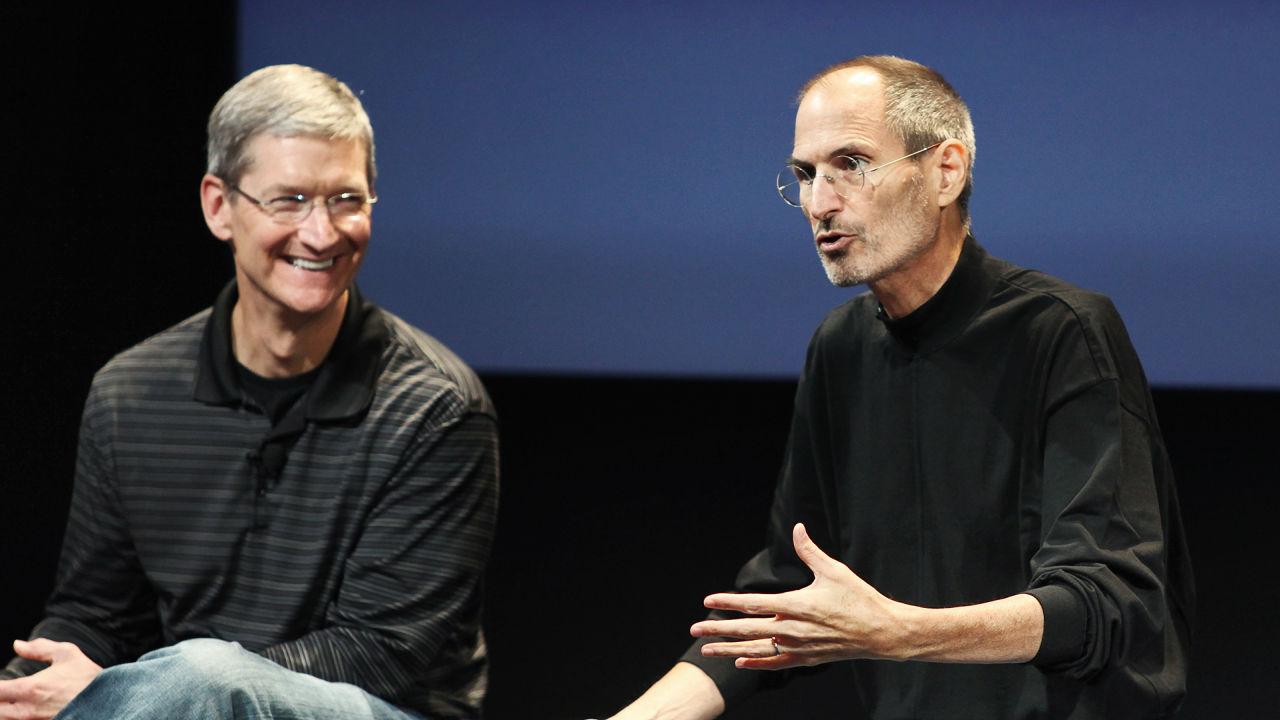Foresights and ideas that expand minds and inspire a change of heart.

In mid-April this year I was a keynote speaker at RetailDetail's congress in Antwerpen, Belgium. After the congress I was interviewed about my book Digilogue, digital natives and my perspective on the future of retail. Before you read part 2 of this interview below, please make sure you have read part 1, and if you want to hear more of my predictions on the future of retail take a look at this Future Trendspots video.

It’s not as much a comparison, as a comment on teamwork and personality. If Tim Cook for many years as COO stood for operational efficiency, supply chain optimisation, and lean principles, Steve Jobs stood for creativity, design, and vision. In business, we have to have both, and their partnership has been heralded for ensuring that Steve’s ideas could actually become a reality. While some claim that success is 1% inspiration, and 99% perspiration, I tend to think that complementary thinking and communication skills at the leadership level are key to ensuring success for any brand.
Digital natives speak technology without an accent. For them a magazine or brochure on the floor is simply an iPad that doesn’t work. This means we need to reconsider our communication, our speed of delivery, and the content and stories we curate for them. Because digital natives are voracious consumer of digital media, not being present in digital media (or being present in a non-meaningful way) essentially means you are non-existent to them. However, while they might love all things digital, and their interface with life has become digitized, they still appreciate heritage, brand, utility, and relevance so if your brand can shift, upgrade and play in this space, they have lots to gain. An example of this is Victorinox, the heritage Swiss brand, which decided to digitally amplify how its Swiss knives had been used by its clients over 125 years in meaningful ways. They turn their clients into heroes, and as a result showed the brand as a timeless enabler of adventure and solver of problems – and the story was told in a way which engaged both digital minds and analogue hearts.
Provenance brands do this really well. And brands can learn from regions, and provenance brands, like Champagne, Parmiggiano-Reggiano, Kobe Beef, or Wisconsin Microbreweries. They act as if they are hyperlocal and true to local traditions, while communicating and thinking globally. At times it can be hard to become a prophet in your own hometown, as we say in Sweden, and sometimes you need to build a brand externally, globally, regionally, nationally, to become truly relevant locally. In age of globalization and digitization, being of a place, or at least authentically communicating that sense of provenance and heritage is important for consumers who are keen to feel a sense of authenticity in a world of generics.

Header Text
Lorem ipsum dolor sit amet, consectetur adipiscing elit, sed do eiusmod tempor incididunt ut labore et dolore magna aliqua. Ut enim ad minim veniam, quis nostrud exercitation ullamco laboris nisi ut aliquip ex ea commodo consequat. Duis aute irure dolor in reprehenderit in voluptate velit esse cillum dolore eu fugiat nulla pariatur.
Lorem ipsum dolor sit amet, consectetur adipiscing elit, sed do eiusmod tempor incididunt ut labore et dolore magna aliqua. Ut enim ad minim veniam, quis nostrud exercitation ullamco laboris nisi ut aliquip ex ea commodo consequat. Duis aute irure dolor in reprehenderit in voluptate velit esse cillum dolore eu fugiat nulla pariatur.
Lorem ipsum dolor sit amet, consectetur adipiscing elit, sed do eiusmod tempor incididunt ut labore et dolore magna aliqua. Ut enim ad minim veniam, quis nostrud exercitation ullamco laboris nisi ut aliquip ex ea commodo consequat. Duis aute irure dolor in reprehenderit in voluptate velit esse cillum dolore eu fugiat nulla pariatur.

Header Text
Lorem ipsum dolor sit amet, consectetur adipiscing elit, sed do eiusmod tempor incididunt ut labore et dolore magna aliqua. Ut enim ad minim veniam, quis nostrud exercitation ullamco laboris nisi ut aliquip ex ea commodo consequat. Duis aute irure dolor in reprehenderit in voluptate velit esse cillum dolore eu fugiat nulla pariatur.
Lorem ipsum dolor sit amet, consectetur adipiscing elit, sed do eiusmod tempor incididunt ut labore et dolore magna aliqua. Ut enim ad minim veniam, quis nostrud exercitation ullamco laboris nisi ut aliquip ex ea commodo consequat. Duis aute irure dolor in reprehenderit in voluptate velit esse cillum dolore eu fugiat nulla pariatur.
Lorem ipsum dolor sit amet, consectetur adipiscing elit, sed do eiusmod tempor incididunt ut labore et dolore magna aliqua. Ut enim ad minim veniam, quis nostrud exercitation ullamco laboris nisi ut aliquip ex ea commodo consequat. Duis aute irure dolor in reprehenderit in voluptate velit esse cillum dolore eu fugiat nulla pariatur.

Header Text
Lorem ipsum dolor sit amet, consectetur adipiscing elit, sed do eiusmod tempor incididunt ut labore et dolore magna aliqua. Ut enim ad minim veniam, quis nostrud exercitation ullamco laboris nisi ut aliquip ex ea commodo consequat. Duis aute irure dolor in reprehenderit in voluptate velit esse cillum dolore eu fugiat nulla pariatur.
Lorem ipsum dolor sit amet, consectetur adipiscing elit, sed do eiusmod tempor incididunt ut labore et dolore magna aliqua. Ut enim ad minim veniam, quis nostrud exercitation ullamco laboris nisi ut aliquip ex ea commodo consequat. Duis aute irure dolor in reprehenderit in voluptate velit esse cillum dolore eu fugiat nulla pariatur.
Lorem ipsum dolor sit amet, consectetur adipiscing elit, sed do eiusmod tempor incididunt ut labore et dolore magna aliqua. Ut enim ad minim veniam, quis nostrud exercitation ullamco laboris nisi ut aliquip ex ea commodo consequat. Duis aute irure dolor in reprehenderit in voluptate velit esse cillum dolore eu fugiat nulla pariatur.
& STAY UP TO DATE WITH FORESIGHTS AND TREND REPORTS!
WE WILL EQUIP YOU WITH THE VIDEOS AND MATERIALS YOU NEED TO SUCCESSFULLY PITCH ASN.
0 Comment